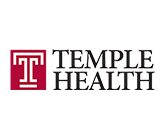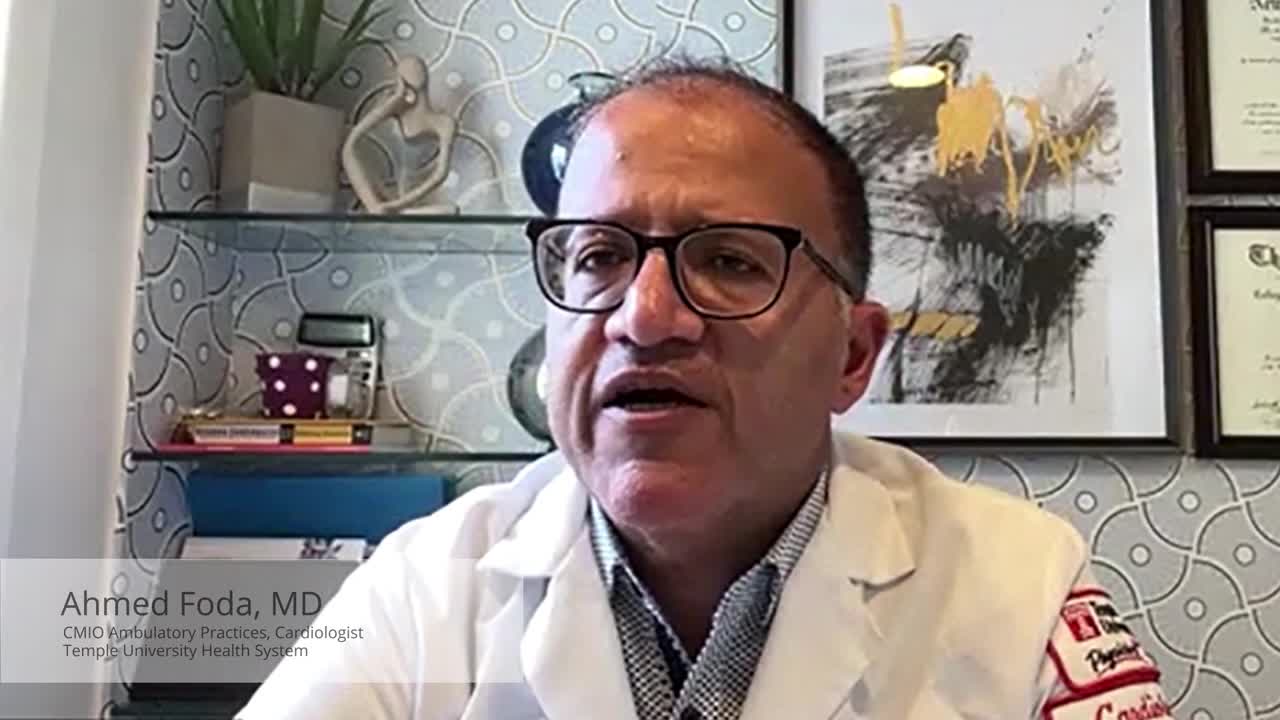Temple Health saves over 3,600 hours a month with speech‑enabled EHR
Increased training and adoption of Dragon Medical One dictation and voice command use has created significant time savings for Temple Health’s clinicians.
Optimizing the work environment for clinicians
Dr. Ahmed Foda of Temple University Health System saw the need to encourage adoption of Dragon Medical One, so a team was put together to train their busy physicians in the opportunities speech‑enabled EHR gives.
Download case study (pdf. Open a new window) Explore Dragon Medical One

Dr. Ahmed Foda
CMIO, Ambulatory Practices
Temple University Health System
Challenge
Maximize adoption of its speech solution across the Temple University Health System to optimize its Epic EHR.
Solution
Focused internal marketing and training to increase the use of straight dictation and advanced Dragon Medical One functionalities and workflows.
Results
A 297% increase in adoption among Temple’s clinical staff, who now dictate their consultation notes and use over 32,000 voice commands in Epic every month.
Temple Health uses Dragon Medical One to improve their clinical documentation efficiency
In the following demonstration, Ahmed Foda, MD, CMIO Ambulatory Practices, Cardiologist, at Temple University Health System highlights how he saves time and improves his documentation workflow with Dragon Medical One.
To learn more, read the case study(pdf. Open a new window).
Background
Temple University Health System, a major healthcare network in Pennsylvania, manages its patient record in Epic’s electronic health record (EHR) to help clinicians work more effectively. In 2013, Temple Health introduced Dragon Medical One, Nuance’s conversational AI workflow assistant and documentation companion, to augment its EHR with speech recognition. However, many of the system’s busy attending physicians were not taking advantage of the solution’s advanced functionalities, such as speech‑to‑text and voice commands, to reduce their documentation burden.
Ahmed Foda, MD, cardiologist, and CMIO for Temple Health’s Ambulatory Practices has been a regular Dragon Medical user since 2014, using hundreds of voice commands during his clinic days every week. “The first thing I do when I enter the office in the morning is launch Epic and Dragon,” he says. While looking for ways to maximize the benefit of Dragon Medical One and further optimize his EHR workflows, he recognized the opportunity to help his fellow clinicians make the most of speech recognition.
“Once you connect with someone and clearly show them the real‑time benefits of Dragon Medical, they’re sold instantly,” Dr. Foda explains. “What my colleagues needed was the support to use the solution effectively.”
Optimizing EHR workflows with voice control
For the first two years, Dr. Foda ran the optimization pilot. Using his workflow to experiment on how best to combine Dragon Medical One and Epic, he worked with small groups of colleagues to pass on what he had learned. Recognizing the success of his training effort, Temple Health’s leadership gave Dr. Foda the go‑ahead to form a team, which he named EPOCH—the EHR Provider Optimization, Competencies, and Happiness program.
“Our executives took the opportunity to optimize the work environment for our clinicians,” says Dr. Foda.
“The key to our efforts is creating a culture change within Temple Health,” says Dr. Foda. “Speech recognition needs to be our de facto way of completing charts.” On top of highly effective one‑to‑one and small group training sessions, the Epic Physician Support (EPOCH) team has also created an intranet of tutorial videos, and helpful cheat sheets of common voice commands that clinicians can attach to their monitors.
297%
increase in Dragon Medical One adoption
32K
voice commands used in Epic every month
3,635
hours saved monthly by replacing typing with speech recognition
Targeted training unlocks hours of reclaimed time
By the start of 2021, all 400 of Temple Health’s Dragon Medical One licenses were active—and they have now expanded to an Enterprise license to extend Dragon’s workflow optimization capabilities to the entire clinical team.
With nearly 670—including Attending Physicians, Advanced Practice Practitioners, Fellows, and Residents—regularly using Dragon Medical One as part of their daily Epic workflow, the number of voice commands has jumped from 3,000 per month to over 32,000. “We have highly adopted users who are dictating as many as 400 lines per hour,” says Dr. Foda.
This jump in dictation and voice command use has created significant time savings for Temple Health’s clinicians—helping them reclaim over 3,600 hours a month. Dr. Foda estimates that a highly optimized workflow can save as much as five minutes per encounter, which translates to more than 31 full working days saved annually.
With ongoing training scheduled for every user, the EPOCH team will regularly refresh clinicians’ skills and help Temple University Health System build even more efficient workflows.

